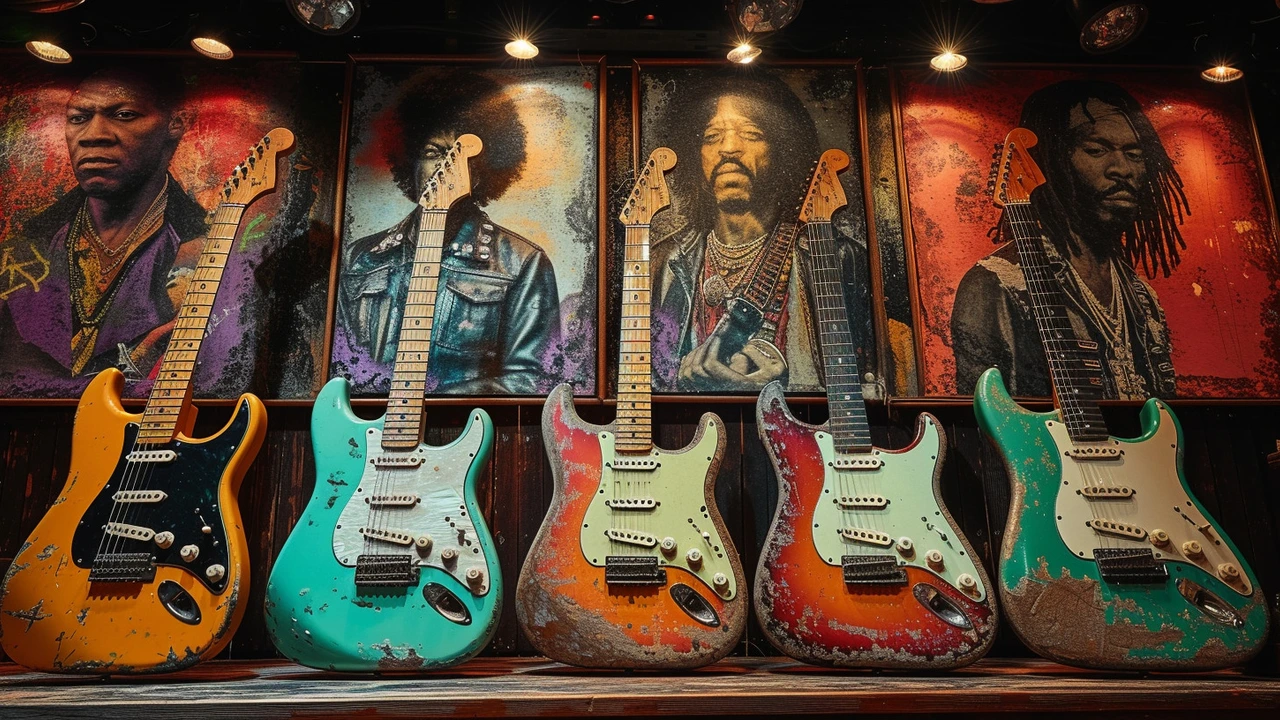Deciphering the Roots of Your Musical Taste
Now, I don't mean to sound like your high school psychology teacher, but bear with me. The first step to choosing the right electric guitar is to get a solid understanding of your music style, and that requires a little self-reflection. Think about your favourite bands or artists, the kind of music that makes your heart beat faster, and even the songs you can't help but play on repeat. Trying to figure out your music taste is like untangling Max’s leash after he's had a good romp around the yard. A bit messy at first, but completely doable!
Do the distorted licks of a Les Paul used in rock catch your ear, or are you more attracted to the bright, shimmering strums of a Stratocaster in bluesy tunes? Identifying what draws you to your favourite music will guide your choice. To decipher your music taste, think about the theme, feel, and sound that resonates with you the most. It's all about capturing that feeling and finding the guitar that can echo the inner melodies of your soul.
Understanding the Basics of Electric Guitars
Let's untangle some guitar jargon the same way I manage Skye's cage every cleaning day. The primary parts of the electric guitar include the body, neck, fretboard, pickups, and bridge. The body can be solid, semi-hollow, or hollow, which affects the resonance and tone. The neck, primarily made from maple or mahogany, holds the fretboard and is responsible for the guitar's playability.
On the other hand, fretboards come in various materials, such as rosewood, maple, or ebony, each bringing a unique touch to the guitar’s sonic character. Pickups are like the radio antennas of an electric guitar. They pick up the string vibrations and convert them into an electronic signal that can be amplified. The bridge aids in string stability and pitch control.
Unravel the Mysteries of Guitar Specs
I'll let you in on a little secret: comprehending guitar specifications can be just as exciting as decoding treasure maps, aside from the fact that X doesn’t mark the spot here! The specifications shape the guitar's playability, tone, and appearance—component bonuses to your purchase.
Tonewood, shape and size, pickup configuration, neck profile, bridge type, and weight are just a few specifications to consider. The right blend of these factors will ensure that the guitar feels as comfortable as holding hands with an old friend. It’s like when Max understands my command to 'stay'—it all just clicks!
Finding the Perfect Match: Guitar & Genre
Just like how Max and Skye have different diets according to their species (despite Skye’s aspirations to taste dog food), different guitar types suit different genres. Single-coil pickup guitars like Strats tend to go well with blues, pop, or country. On the other hand, humbucker pickup guitars like Gibson Les Pauls or SGs are great for rock, metal, jazz, and blues. Semi-acoustic guitars are usually favored for jazz, blues, and rock.
Although, let's also celebrate the rule-breakers who aren't afraid to explore unconventional pairings. After all, who’s to judge if Skye dreams of tasting Max's food? What really matters is finding the right balance between tradition and personal preference.
Solving the Budget Dilemma: Affordable VS Expensive Guitars
The eternal question: "Does high price always mean high quality?" To put it simply, no. In my experience, some affordable options can perform (almost) as well as the top-tier ones. It’s like choosing between a Ralph Lauren coat and a no-name brand. Both can keep you warm, but one certainly makes a bigger dent in your wallet.
However, keep in mind that cheap guitars may require additional setup or part replacements. So, if you're willing to put time and (possibly more) money into tweaking the guitar, an affordable initial purchase may still offer you value. Don’t be disheartened by budget constraints. Remember, even Jimi Hendrix started with a $5 acoustic guitar!
Choosing the Right Guitar Brand
Choosing a brand can be as vital as selecting the type of guitar. Why, you ask? Just as Max has a favorite brand of gourmet dog food, guitarists can find specific brands more suited to their taste and playing style. Some brands are known for their exceptional craftsmanship and unique tonal properties.
Companies like Fender, Gibson, Ibanez, and PRS are known for their high-quality electrics. However, don't overlook the gems that lesser-known brands offer. Explore, experiment, and find a brand that sings in harmony with your soul.
Nailing the Test Play: The Proverbial First Dance
Trust me when I say, no amount of online reviews or specification comparisons can replace the experience of actually trying a guitar firsthand. Just like when I rescued Max, despite all my prior research about Australian Shepherds, it was our first encounter that sealed the deal.
When your fingers first glide across the fretboard, when you strum those strings and hear the sound resonate around you—that's when you'll know. Feel the weight, keenly observe how the guitar rests against your body. Test its sound, clean and distorted. It should be like connecting with a long-lost part of yourself, a tranquil fusion of passion, joy, and inspiration. Like the perfect first dance.
For me, that same connection happens every time I play my midnight blue Jazzmaster. It's a thrill that no words can fully capture, and it's something I genuinely hope you experience when choosing your electric guitar.
In the end, remember this: the 'right' guitar isn't determined by price tags, brand names, or popular opinion—it's the one that amplifies your distinct voice and frees your musical spirit. To quote Billy Joel, "I think music in itself is healing. It's an explosive expression of humanity. It's something we are all touched by. No matter what culture we're from, everyone loves music."
Folks, happy strumming and may your strings always be in tune!



